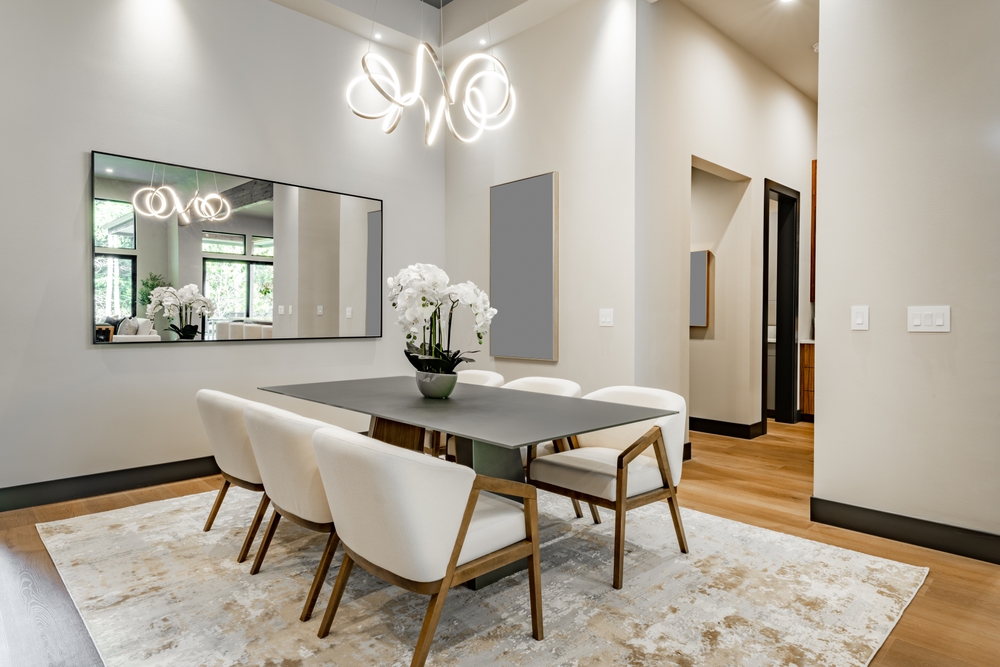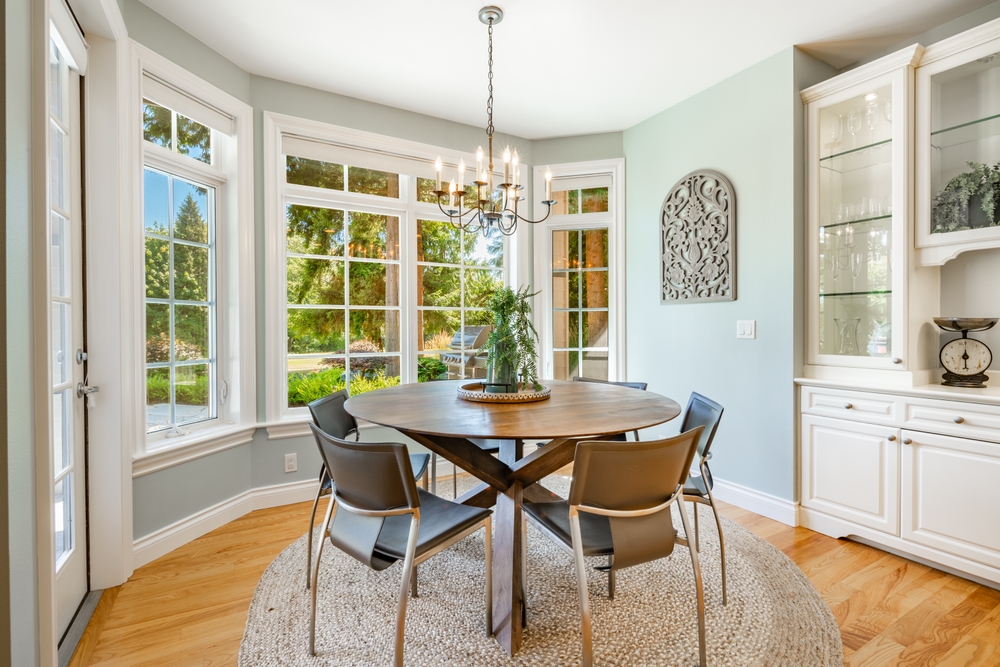
The dining room is the heart of a home, where family and friends gather to share meals, experiences, and entertainment. If you feel your dining room needs to be updated, cramped, or not, remodeling ideas can breathe new life into this essential space. Yet a living room remodel doesn't have to be a shot in the dark. Before you dive into your renovation of the dining room, here are some big things to keep in mind:
Define Some Design Goals
Begin with considerations of use and what ambiance you want it to take on. Do you want it to feel more open and airier? Do you love a particular style, such as a farmhouse or mid-century modern? A clear path in design guides every other choice you will need to make for the space.
Define Your Design Goals

Look closely at your dining room's current design and note what areas are lacking or could use help. Is it too small when your ideal table and chairs should fit comfortably? Is the traffic flow off, or maybe disjointed somehow? Pay attention to where the doors and windows are placed and any existing built-ins, and consider what the space could best be used for.
Set Your Budget
Renovating a dining room can be expensive relatively fast, so deciding on a realistic budget is advisable. Some of the possible expenses to consider in the budget include:
- The amount that the demolition and construction will cost.
- New floors, walls, and ceiling treatments
- Furniture, lighting, and window treatments
- Finishing decor and accessories
While working on it, remember to include contingencies for unexpected costs. Good practice dictates adding a 10-20% cushion to your projected general budget to accommodate uncertainty.
Opt for Durable -Low-Maintenance Materials

If the floor is damp, go for hardwood, luxury vinyl plank, or a wipeable tile. Semi-gloss or eggshell finishes should be used on the surface walls, as they offer better scuff resistance. Dining tables should be selected with a surface material that can withstand spills, scratches, or frequent use, such as solid wood, stone, or high-quality laminate.
Don't Forget Storage and Organization
As you remodel your dining room, consider the latest renovation trends and see if you can work with smart storage and organization features. Built-in cabinetry or a buffet can help stash dishes, linens, and serving wares. This is an excellent way to keep a big table clear and a room uncluttered and ordered. If the option of built-ins is lacking, you can use freestanding furniture to help serve this purpose. Sideboards, bar carts, or even credenzas would work well.
Incorporate Flexible Seating

While you'll want to have a central dining table and chairs, it's a good idea to work in some flexible quantities of seating. This could be through a built-in banquette, a pair of accent chairs, or even a small side table with stools that can provide extra seating in case of larger gatherings. Flexible seating also allows flexibility in rearranging the space, whether heading towards a family dinner or a cocktail party.
Integrate Timeless Style
Redecorate your dining room with designs that will not date years later. Transient features almost always quickly date a space. So, work with more timeless, versatile pieces and finishes. Neutral color palettes, natural materials, and simple architectural details are generally more timeless.
Multi-Functional Furnishings
Try multivariate product designs where pieces have dual objectives, such as a table with storage or a sideboard that can work as a serving station. The double-purpose furniture will enable the 'room' to function differently without feeling overly cluttered.
Plan for Acoustics
Dining rooms are often echoic, making it difficult to converse. Sound-absorbing objects such as area rugs, upholstered furniture, and draperies can help dampen noise from oneself in the dining room.
Complement the Rest of Your Home
Although the dining room needs its personality, it must blend cohesively with your house's design. Apply similar color schemes, materials, and furnishing styles to smooth the transition from one space to another.
Conclusion
Unless you are experienced in undertaking several DIY remodeling experiences, it's best to leave a dining room remodel to the pros. Engage a good contractor, an interior designer, or a design-build firm to develop your project from a concept plan to the final vision. They will be able to advise you on living room remodel solutions in 2024. They will also take care of all necessary permitting, project management, and coordination with subcontractors to make your renovation go more smoothly and successfully.







تعليقات (0)
اترك تعليقا